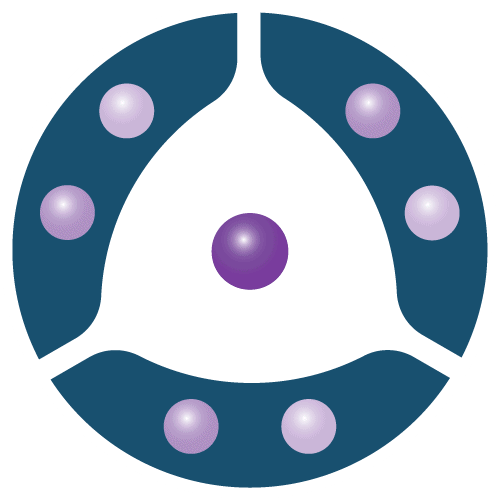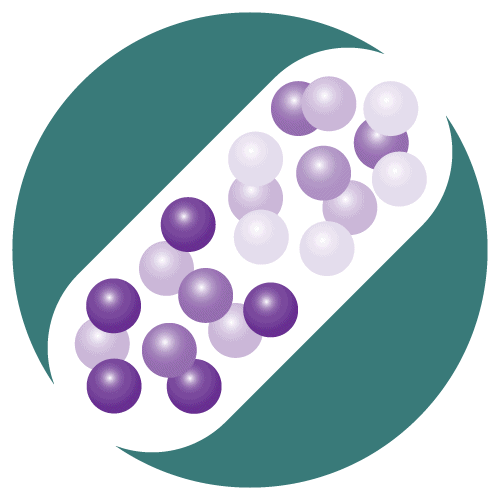Metrion Biosciences Case Studies
Discover our latest Case Studies
At Metrion, we know that new innovations and developments are happening all the time. In this collection of Case Studies, we share our insights and lessons learned from decades of working in drug discovery alongside future projections for your product development needs. We combine this knowledge with key strategies to help you succeed whatever your drug discovery needs.

Development of TRPML1-4A assays across manual, automated patch-clamp, and fluorescence-based platforms
Overview

GLP hERG screening assay validation following ICH E14/S7B 2022 Q&A best practice guidelines
Overview
The ICH E14/S7B 2022 Q&As stipulate that in vitro hERG assessments should be conducted in accordance with Good Laboratory Practice (GLP). We present a GLP compliant study using the conventional manual patch-clamp technique in accordance with the ICH E14/S7B Q&A best practice guidelines to establish in-house IC50 values for ondansetron, moxifloxacin and dofetilide.

Multi-assay High-throughput Drug Repurposing Screen: KCNC1 Case Study
Overview
Eliana is a two-year-old from Canada with a de novo mutation (V434L) in her KCNC1 gene which encodes for the Kv3.1 channel in central nervous system neurons such as cerebellar neurons and GABAergic interneurons. The mutation manifests as a variety of neurological disorders which can include myoclonic epilepsy and ataxia due to K+ channel mutation, developmental epileptic encephalopathy (DEE), or hypotonia, depending on the specific variant. Although Eliana does not exhibit typical DEE, she suffers from hypotonia, cortical-visual impairment, vertical nystagmus, and global delays.
Eliana’s parents founded the KCNC1 Foundation, where 14 different genetic variants from 36 patients have been registered. Of these patients, 25% share the A421V variant, 12.5% share the R320H variant, a few exhibit the V432M variant, and the remaining variants are seen in 1-3 patients. Together with their partners, the foundation decided to undertake drug repurposing studies to quickly identify safe and cost-effective therapies for Eliana. The KCNC1 foundation collaborated with Metrion Biosciences, where manual and automated (Qube) patch-clamp techniques and Fluorescent Imaging Plate Reader (FLIPR) high throughput screens (HTS) against the mutant channel were performed to identify hit compounds.


Investigating the correlation between thallium flux and automated patch-clamp for ion channel activators
Overview
- Ion channels play a key role in regulating resting membrane potential and cell excitability and are attractive targets for therapeutic intervention.
- Thallium (Tl+) flux assays, which measure the flow of Tl+ through potassium channels, offer a high throughput method for the identification of potassium channel activators. However, these assays are a surrogate for channel function and it is important to have an appropriate panel of orthogonal and translational electrophysiology assays in place to confirm activity at the channel of interest.
- We used a Tl+ flux assay to screen a library of 100K compounds and identified 173 ‘hit’ compounds as potential activators of a K2P potassium channel. These compounds were then screened in an automated patch-clamp (APC) assay to confirm activity.
- Compounds with the highest activity in Tl+ flux were the most likely to confirm in automated patch-clamp, but the correlation between the two systems was not entirely uniform.
- Aim: to investigate the correlation between thallium flux and automated patch-clamp.


Introduction
The cardiac late Na+ current (late INa) generates persistent inward currents throughout the plateau phase of the ventricular action potential and is an important determinant of repolarisation rate, EADs and arrythmia risk¹. As inhibition of late INa can offset drug effects on hERG and other repolarising K⁺conductances, it is one of the key cardiac channels in the Comprehensive in vitro Pro-arrythmia Assay (CiPA) panel being developed by the FDA to improve human clinical arrythmia risk assessment²̛ ³.


A drug discovery collaboration between Japanese pharma and a UK SME CRO successfully developed novel small molecule inhibitors of the Kv1.3 channel to treat autoimmune disease
Introduction
Ion channels represent 15 – 20% of historic drug approvals and recent drug discovery projects. Many ion channel families (Nav, Cav, TRPx and GABA) are validated as therapeutic targets based on human genetics, animal models and selective pharmacology. However, ion channels are challenging targets requiring specialist target class knowledge and screening technology such as automated patch clamp (APC) electrophysiology.
Here we outline our example where a pharma company interested in ion channels, but lacking expertise and screening platforms turned to a specialist CRO to fill this knowledge gap. In our case a Japanese pharma company with plate-based assay data wanted to expand medicinal chemistry SAR by accessing high quality APC and ion channel expertise.
During the collaboration selective Kv1.3 modulators with nM potency and efficacy against human T-cells were identified.


Development of an Impedance Based Screening Assay for Cardiac Safety and Cardiotoxicity Detection in Stem Cell-derived Cardiomyocytes
Introduction
Cardiac toxicity remains the leading cause of new drug safety side-effects. Current preclinical cardiac safety assays rely on in vitro cell-based ion channel assays and ex vivo and in vivo animal models⁽¹⁾. These assays provide an indication of acute risk but they do not always predict the effect of chronic compound exposure, as recently seen with oncology drugs. Therefore, new assays are required to characterise chronic structural and functional effects in human cells earlier in drug discovery. Impedance-based technology can provide more accurate chronic cardiotoxicity measurements in an efficient manner using human induced pluripotent stem cell-derived cardiomyocytes (hiPSC-CMs).
Here we outline validation of chronic cardiotoxicity assays using an impedance platform in combination with commercial hiPSC-CMs:
- Impedance readouts can be reliably measured and are stable to allow acute (< 24 hrs) as well as longer duration (72 hrs) testing.
- Identify the acute and chronic effects of clinical cardiac ion channel modulators against cardiomyocyte contractility and viability.
- Confirm that structural and functional cardiotoxicity of clinical compounds arising from multiple cellular and signalling mechanisms could be detected in an acute and/or chronic assay timeframe.

Identification of novel ion-channel binders: TRPA1 antagonist case study
Introduction
- Domainex and Metrion Biosciences have formed an alliance to identify new chemical hits against ion channel targets. Key to this collaboration are Domainex’s experience in hit identification and Metrion Bioscience’s expertise in ion channel screening and pharmacology.
- The transient receptor potential cation channel A1 (TRPA1) is a voltage-dependent non-selective cation channel. It is an established therapeutic target, antagonists of which may have utility in the treatment of pain and the management of chronic cough. Bautista et al¹ described TRPA1 as a “gatekeeper of chronic inflammatory disorders of the skin, airways, and gastrointestinal tract”.
- As part of this alliance, Domainex applied its proprietary LeadBuilder platform to identify commercial compounds for screening based on Metrion’s validated agonist and antagonist profiles of reference compounds. Compounds were then purchased and screened at Metrion Biosciences through a cascade of assays, to identify true antagonists of TRPA1.

Using new in vitro cardiac ion channel assays and in silico models to predict proarrhythmic risk with automated patch clamp data
Introduction
The FDA’s Comprehensive in vitro Proarrhythmia Assay (CiPA) initiative is designed to remove the over-reliance on hERG data to predict human clinical cardiac risk, with recent results suggesting that inclusion of additional cardiac ion channels and assays (e.g. peak and late Nav1.5, Cav1.2, dynamic hERG) improve risk predictions of in silico action potential models. The CiPA working groups currently use a mixture of manual and automated patch clamp (APC) platform data, but future CiPA drug screening will likely rely on APC data.
We show that high quality APC data from CiPA cardiac assays can accurately predict proarrhythmic risk of some, but not all, drugs in FDA in silico models, however, two areas require improvement:
- The potency of CiPA compounds, such as verapamil, against Cav1.2 is influenced by the voltage protocol used and the state- and frequency-dependence of Cav1.2 channel inhibition.
- Compounds exhibiting slow binding on-rates underperform in certain assays, including our current dynamic hERG assay.

New CiPA cardiac ion channel cell lines and assays for in vitro proarrhythmia risk assessment
Introduction
New cardiac safety testing guidelines are being finalised, as part of the FDA’s Comprehensive in vitro Proarrhythmia Assay (CiPA) initiative, which aim to remove the over-reliance on screening against the hERG channel by expanding the panel to include hNav1.5, hCav1.2, hKv4.3/KChiP2.2, hKir2.1 and hKv7.1/KCNE1 human cardiac ion channels. In addition, the CiPA working groups have recently identified two additional in vitro assays required for in silico models to reliably predict proarrhythmia. The first is a ‘late’ sodium current assay, as inhibition of persistent inward current can affect repolarisation and mitigate proarrhythmia (e.g. ranolazine). The second assay quantifies the degree of drug trapping in the hERG channel using the Milnes voltage protocol, which can improve the prediction of proarrhythmic risk.
We have validated these additional cardiac assays on the gigaseal quality QPatch 48 automated patch clamp platform. Rather than rely on pharmacological activators such as ATX-II or veratridine to induce late openings of the hNav1.5 channel, we created a HEK cell line expressing the LQT3 ΔKPQ hNav1.5 mutant which promotes activation of persistent sodium current. Late sodium current was measured using step pulse, step-ramp, ramp, and action potential waveform voltage protocols, using proprietary solutions to minimise rundown and increase whole-cell seal duration.


Let’s work together
What are your specific ion channel and assay needs?
If you have any questions or would like to discuss your specific assay requirements, we will put you directly in touch with a member of our scientific team. Contact us today to discover more.
